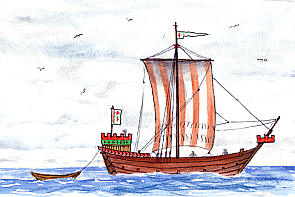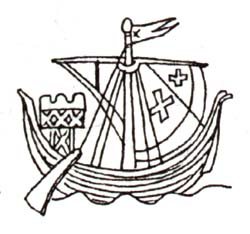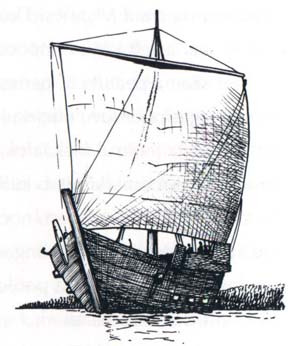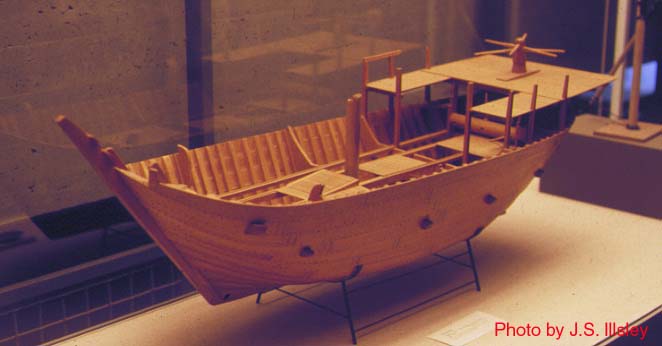| The cog was a wide spacious type of transport ship that through the Middle Ages gradually
replaced the Viking age types in northern Europe. The first mention of a cog is from 948 AD in Muiden near Amsterdam. These early cogs probably used a steering oar (side rudder, quarter rudder). There is no evidence of a stern rudder in northern Europe until about 1240. Cog drawing by Axel Nelson Early cogs had open hulls and could be rowed short distances. During the 13th century they became larger and received a deck, as well as a raised platform in the bow and stern. Exactly what cogs looked like is hard to tell. The best preserved cog is the Bremen cog, where the hull is preserved but not the rig. Besides that, we have to rely on contemporary images. These are some features which are common for all cogs:
13th century cog illustration
To illustrate the quickly increasing size of the ships we can look at the Hanseatic notes in the Lübecker Zollrolle of 1227. The ships were divided in three classes:
In a similar document from 1358 there were two classes:
Model of the Bremen Cog. Photo by J.S. Illsley During the 14th century some of the cogs were constructed with a carvel hull, but clinker still dominated. Finally, around 1400 AD the cog had grown, developed and changed so much that it was a new shiptype, called the holk. During the 15th century the holk developed and could have up to three masts. But that is a different story. A few modern replicas have been made. Related texts
by Per Åkesson, January 1999 Source
|




 Back to Nordic Underwater Archaeology
Back to Nordic Underwater Archaeology